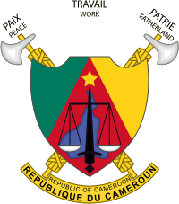On 10 September 2020 in the meeting room of the Yaounde International Handicraft Centre (CIAY), the actors of the handicraft sector gathered around a common goal: the strategies to be implemented for a structuring tailored to their needs. The capacity building workshop for institutional and non-institutional actors in the structuring of the handicraft sector aimed at supporting these actors in the development of a structuring plan for high-growth potential handicraft sub-sectors. The said workshop, chaired by the Secretary General, Joseph Tchana, received a positive response. For the occasion, experts met with craftspeople and professional organisations to discuss the different themes and at the end of the proceedings, recommendations were made.
Regarding the themes, the issues tackled were related to the identification of obstacles to the structuring of the handicraft industry and proposal of possible solutions. It was also a question of identifying the role of the leaders of the main craftspeople groupings in the process of structuring Cameroonian handicraft and proposing a structuring model. Strong recommendations were made following this brainstorming, including raise awareness among stakeholders on the importance of being formalised; ensure transparency in the management of the various bodies; organise awareness-raising sessions for umbrella bodies; develop a manual for the formalisation of craftspeople ; set up a Chamber of Trades and broaden the consultation to include professional associations; conduct an organisational diagnosis of existing structures; ensure the free registration of craftspeople and handicraft businesses in the municipal handicraft offices; encourage craftspeople to pay the withholding tax; support craftspeople through Approved Management Centres (CGA) and adapt the service costs according to their needs.
It should be noted that, within the framework of this structuring, the actors were organised by areas of activities especially art handicraft, service-oriented handicraft and production-oriented handicraft. This training enabled them to acquire strategies, techniques and methods which enable them to better develop their sector.
According to the Secretary General, “this formalisation implies a strategic organisation that can take place at regional, divisional, local or even by areas of activity. For the moment, emphasis is laid on the said business sectors. In the long run, this formalisation will facilitate the implementation, by sector, of an umbrella organisation with its branches on the field which will offer greater opportunities for representation in decision-making bodies. An impact that will be more perceptible at the level of Local and Regional Authorities, in light of current events “.
At the end of the training, the actors of the handicraft sector will be able, thanks to the rich and fruitful exchanges, to pool their strengths and their skills to add value to the handicraft industry and to the Gross Domestic Product as well as to further contribute to the national economic growth.

